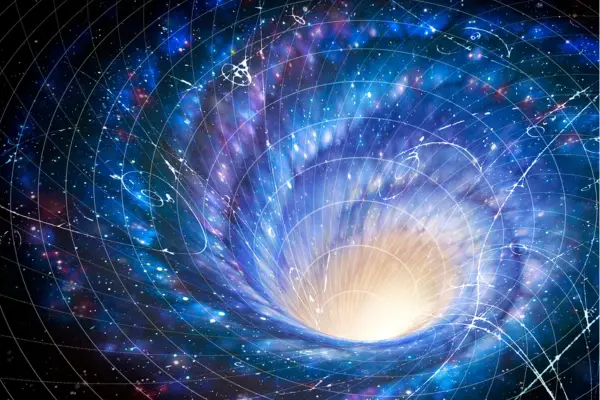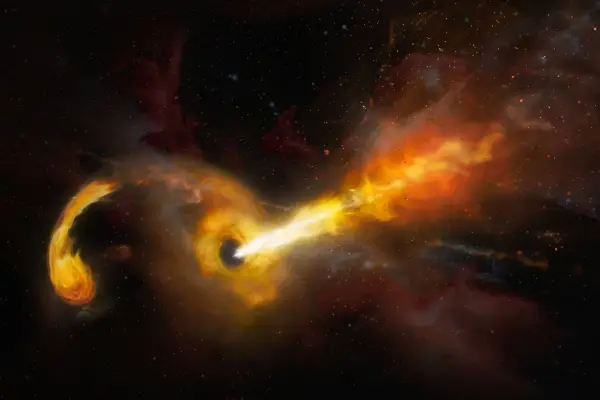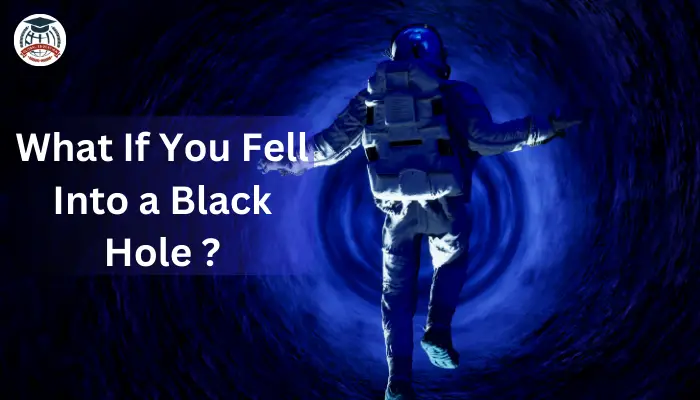A Brief Overview of Black Holes
Black holes are areas of space where gravity is so strong that nothing, not even light, can escape. These are locations where the principles of physics we comprehend begin to blur. They are formed from the remains of enormous stars that have suffered a gravitational collapse toward the conclusion of their life cycles. It is impossible to escape from a black hole’s “event horizon,” which is its circumference. There is no turning around once you are inside. But what’s really fascinating is the voyage within.
The Stretch and Squeeze: Spaghettification

Time Warps and Tidal Forces

Black holes don’t just distort space; they distort time too. Gravity, according to Albert Einstein’s theory of relativity, may bend time. Time appears to slow down as you get closer to the event horizon in comparison to spectators further away. From their perspective, you’d appear to move in slow motion, eventually seeming to freeze just as you touch the event horizon.
Yet, from your vantage point, time feels normal, and you’d see the universe outside speeding up – galaxies forming and dying in mere moments.
As you get closer, the tidal forces – differences in gravity experienced over your body – become immense. These forces try to tear you apart even as the gravitational attraction tries to crush you. It’s a dramatic tug of war with your existence at stake.
Crossing the Event Horizon: A Point of No Return
Should you survive the spaghettification and immense tidal forces (which, let’s be clear, you wouldn’t in real life), crossing the event horizon is your next big event. Contrary to popular depictions, this isn’t a tangible surface. You wouldn’t notice the exact moment you cross into the black hole’s domain. Once inside, however, all paths lead to the singularity – a point where densities become infinite, and our understanding of physics breaks down. Here, you’d inevitably be crushed into an infinitely small point. It’s the universe’s ultimate trash compactor.
Theoretical Possibilities and Silver Linings
While falling into a black hole sounds like a one-way ticket to oblivion, there are some intriguing hypotheses about these cosmic beasts. Some physicists suggest the existence of “white holes” – theoretical opposites of black holes where matter is ejected rather than consumed. Could a black hole act as a wormhole or bridge to another universe or a spot inside our own? The fact is that we are unsure.
Additionally, there is the intriguing, though speculative, notion that black holes may serve as doors to other worlds. Instead of meeting a grim end, you’d emerge in an entirely different realm with new rules, stars, and phenomena.
In conclusion, black holes remain one of the most mysterious and thrilling objects in our universe. The idea of venturing into one, while deadly and terrifying, offers a vivid exercise in exploring the boundaries of our understanding. They are proof that the cosmos is full of surprises and anomalies that stretch our imaginations and challenge the very foundation of our knowledge. As you stare up into the night sky, contemplating the boundless, consider these cosmic whirlpools and the mysteries they contain.
Global Education will bring much more astrophysical information soon till then read about the enigmatic North Sentinel Island and discover the mysteries related to this Indian tribe forbidden to the world.







0 Comments